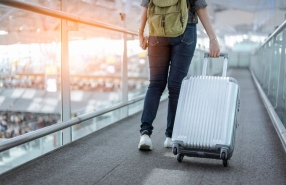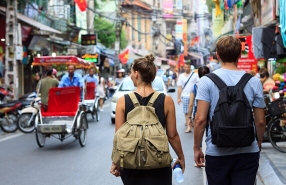What Not To Do In Laos ? Essential Advice For First-Time Visitors

Laos, the Land of a Million Elephants, is famously peaceful and profoundly Buddhist. This gentle atmosphere makes travel to Laos incredibly rewarding, but it hides strict cultural rules that many first-time visitors accidentally break. Simple actions or gestures that are normal at home can easily cause offense without you realizing it. How can you truly enjoy your trip while being sure to understand the local etiquette ? This comprehensive guide simplifies the complex list of things not to do in Laos, empowering you to navigate cultural differences with confidence. Autour Asia believes understanding what not to do in Laos is the key to an unforgettable, respectful adventure.
What Not To Do In Laos ?
- I. Why is it important to know what not to do in Laos ?
- II. Top 10 things not to do in Laos
- 1. Do not touch monks (Especially if you are a woman)
- 2. Do not point your feet at people or Buddha statues
- 3. Do not wear shoes inside temples or homes
- 4. Do not touch anyone’s head
- 5. Do not dress revealingly
- 6. Do not display affection in public
- 7. Do not raise your voice or lose your temper
- 8. Do not take photos without permission
- 9. Do not buy antiques or wildlife products
- 10. Do not litter or damage nature
I. Why is it important to know what not to do in Laos ?
Laos is a profoundly spiritual place where life revolves around the temple. Beneath the surface of gentle smiles lies deep reverence for monks and ancient traditions. Because the culture is non-confrontational, locals will rarely correct a tourist's error. This is why knowing what not to do in Laos is so vital for maintaining harmony and respect during your stay.

Tourists often fail to grasp the sanctity of simple gestures, especially those involving the head or feet. These subtle cultural oversights lead to silent offense. Learning to navigate these differences is the best defense against committing critical Laos travel mistakes, ensuring your presence is welcomed and your memories are positive and respectful.
II. Top 10 things not to do in Laos
1. Do not touch monks (Especially if you are a woman)
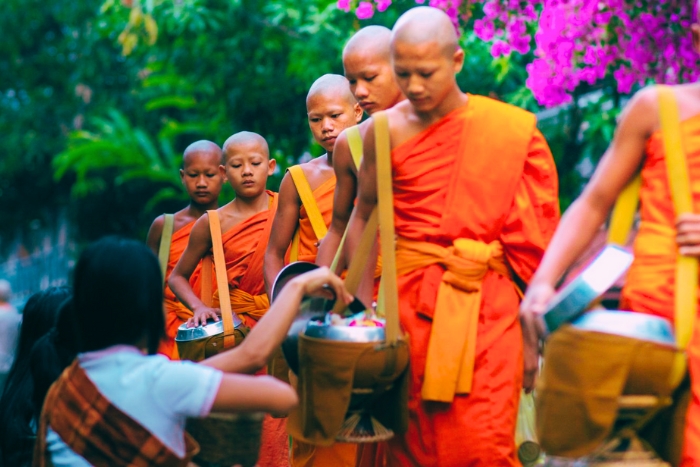
Monks are deeply respected, so anyone planning to travel to Laos must avoid physical contact entirely. For women, it is strictly taboo to touch a monk or even brush against his robes. This is the most crucial rule concerning what not to do in Laos ! If a female traveler wishes to give an item, she should not hand it directly to him. Instead, she must pass it through a male companion or place the offering on a tray. This simple act honors Buddhist tradition.
2. Do not point your feet at people or Buddha statues

Feet carry a powerful cultural meaning in Laos, and this is where many visitors unintentionally slip up. Among the things not to do in Laos, pointing your feet at people or sacred images is one of the most sensitive. Because feetare viewed as the lowest and least spiritual part of the body, directing them toward a Buddha statue can feel deeply disrespectful. Travelers are encouraged to sit cross-legged or gently tuck their feet to the side, especially inside temples, to show awareness and genuine respect for local beliefs.
3. Do not wear shoes inside temples or homes

One important rule to remember is removing shoes before entering temples, homes, and some small businesses. Among the common what to avoid in Laos mistakes, walking inside with footwear on is seen as disrespectful, especially when shoes are clearly left at the doorway. Visitors should also avoid showing the bottoms of their feet, as this gesture can feel offensive in Lao culture. Keeping a polite posture and observing what locals do helps maintain harmony and shows sincere respect for their traditions.
4. Do not touch anyone’s head
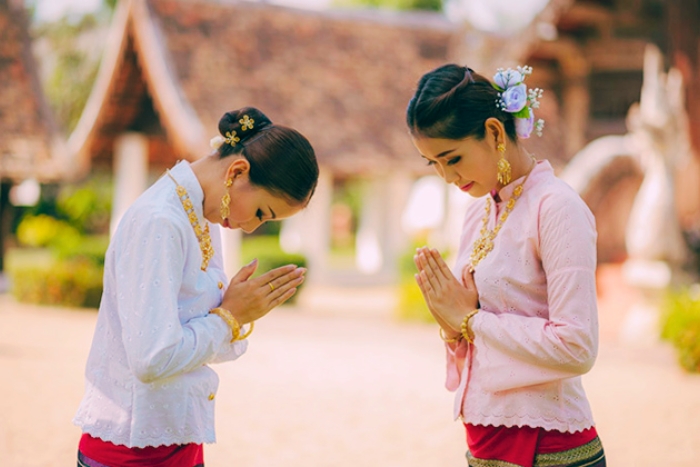
In Lao culture, the head is viewed as the most sacred part of the body, which is why touching it can cause unexpected discomfort. Many Laos travel mistakes happen when visitors casually pat a child’s head or reach over someone without thinking. Such gestures, though harmless elsewhere, feel intrusive and disrespectful in Laos. If accidental contact occurs, a quick, sincere apology helps. The safest approach is keeping hands away from anyone’s head and giving people comfortable personal space to maintain cultural harmony.
5. Do not dress revealingly
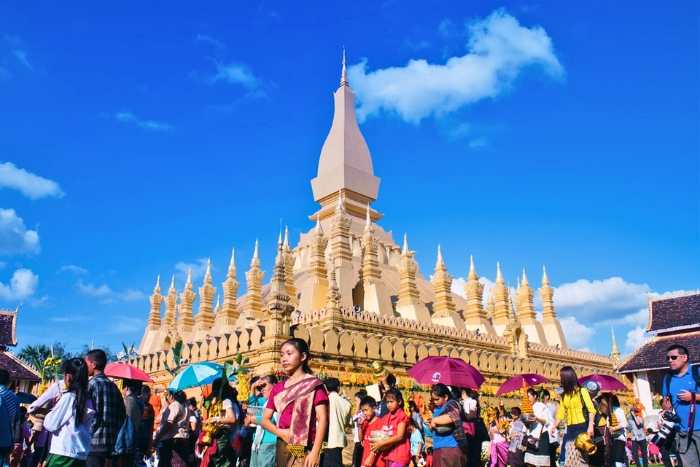
Laos places great importance on modest dress, and ignoring this expectation is one of the clearest examples of what not to do in Laos. Clothing that exposes shoulders, midriffs, or thighs is considered inappropriate, especially near temples or village areas where traditions remain strong. Even casual beachwear should stay within resort grounds. Visitors who choose longer shorts, light trousers, or a simple shawl instantly show respect for local values. Dressing modestly not only avoids uncomfortable misunderstandings but also earns warm appreciation from the people welcoming you.
6. Do not display affection in public

For couples planning a romantic travel to Laos, remember that public affection is heavily frowned upon. Displaying physical intimacy, even a simple kiss or hug, is considered inappropriate and disrespectful to local culture. This is high on the list of things not to do in Laos for visitors accustomed to Western norms. While it is acceptable for same-sex friends to hold hands, any romantic contact should be saved until you are back in the privacy of your hotel or resort.
7. Do not raise your voice or lose your temper

A calm tone is highly valued in Laos, so raising your voice is one of the key behaviors travelers should recognize as what to avoid in Laos. Public anger causes everyone involved to lose face, which shuts down cooperation and creates silent tension. Even when service feels slow or a situation becomes frustrating, maintaining a gentle, steady tone is far more effective. Patience is admired in Lao culture, and visitors who stay composed are met with greater kindness, understanding, and genuine willingness to help.
8. Do not take photos without permission
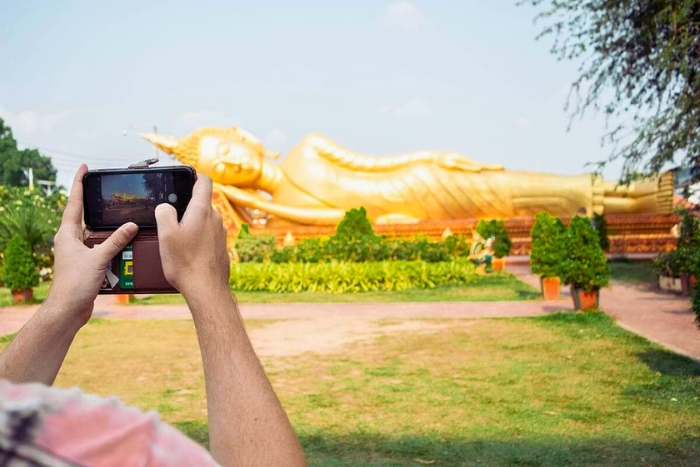
Respect for personal space extends to photography in Laos, and overlooking this courtesy is one of the more common Laos travel mistakes. Locals may feel uncomfortable being photographed without consent, so a simple request before raising your camera goes a long way. Temples, monks, and government buildings often have clear no-photo rules that should never be ignored. Flash near Buddha images is especially inappropriate. Travelers who ask politely and respect refusals not only avoid offense but also create more meaningful and positive interactions.
9. Do not buy antiques or wildlife products
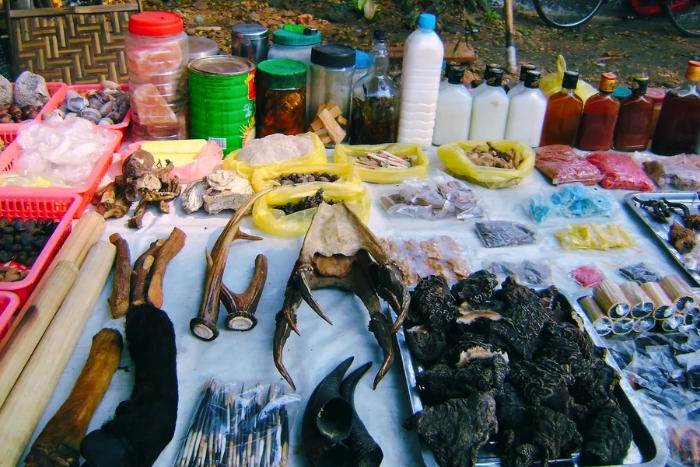
Buying souvenirs may seem harmless, but some items in Laos carry serious legal and cultural consequences. Anyone planning to travel to Laos should know that purchasing antiques or wildlife products is firmly on the list of what not to do in Laos. Antique Buddha statues, ivory, pelts, and items made from endangered animals are strictly prohibited and can lead to fines or confiscation at the border. Choosing modern, handcrafted wood carvings instead supports local artisans and protects both cultural heritage and fragile wildlife.
10. Do not litter or damage nature

Laos is famed for its pristine natural landscapes, but like many developing countries, it grapples with waste issues. Therefore, damaging nature or littering is absolutely high on the list of things not to do in Laos ! Visitors should actively do their part : carry a reusable water bottle, avoid single-use plastics, and always pack out trash when hiking. This responsible behavior shows profound respect for the environment and ensures the country's beauty lasts for generations to come.
Ultimately, this comprehensive list of things not to do in Laos boils down to just one simple concept : respect. By being mindful of the rules regarding monks, feet, and your demeanor, you instantly earn goodwill and avoid accidental offense. The country is filled with genuinely kind people who want to share their culture. Knowing what not to do in Laos simply removes cultural barriers, ensuring your travel to Laos is meaningful and reciprocal. Ready to embrace the Land of a Million Elephants with cultural confidence ? Let Autour Asia guide you.
You might be interested in :
- Ready to explore Laos with confidence ? Autour Asia, your trusted Laos travel agency, is here to guide you through what not to do in Laos so your journey stays respectful, smooth, and truly unforgettable.
- 14 days in Laos
- Laos Travel Guide
- Duration to visit Laos
- 15 days in Cambodia Laos Vietnam
A full 14 days in Laos is an ideal amount of time to see the country’s main highlights without rushing. Most two-week itineraries include Luang Prabang with its waterfalls, temples, and night markets, followed by the peaceful scenery of Vang Vieng and the cultural sites of Vientiane. Travelers often continue south to Pakse, where the Bolaven Plateau and beautiful waterfalls await, before ending the trip in the 4,000 Islands for boat rides and laid-back river life. Two weeks offer a balanced mix of culture, nature, and relaxation.
Yes, Laos is generally safe for first-time travelers. Most visitors find the country calm, friendly, and welcoming. Petty crimes like pickpocketing can happen in busy areas, but serious incidents are rare. As long as travelers use common sense, avoid isolated places at night, and keep valuables secure, they can enjoy a smooth trip. Roads can be uneven in rural areas, so extra caution is helpful when getting around. Overall, Laos offers a peaceful environment where respectful and aware travelers feel comfortable exploring.
The best time to visit Laos is from October to April, when the weather is dry, cool, and pleasant across most regions. This period offers clear skies, comfortable temperatures, and great conditions for exploring cities, temples, and natural landscapes. The Mekong River is also calmer, making boat trips more enjoyable. While the rainy season has its charm, the dry months are ideal for first-time travelers who want smooth travel and fewer weather disruptions. Visiting during this time ensures a more comfortable and memorable experience.
Related travel guide
Other similar articles
CUSTOMIZABLE BY LOCAL EXPERTS
Personalized trip at the original price!
REFUND GUARANTEE
We believe in our work and promise to give you money back.
GOOD PRICE / QUALITY
95% satisfied more than expected!
24/7 LOCAL SUPPORT
We are always available online to provide assistance at any time.
Most read articles
Autour Asia is highly recommended on
Embracing the mission of "Satisfied more than expected" and providing authentic experiences, we have received numerous recommendations on reputable travel forums:












